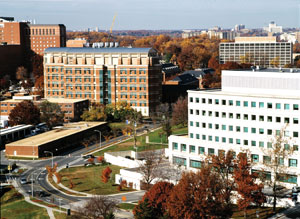A little more than a year has passed since the American Recovery and Reinvestment Act (ARRA) was signed into law. In the May 2009 issue of BioPhotonics, we examined the potential impact of ARRA on the biomedical research community: The stimulus package set aside an additional $10.4 billion for the National Institutes of Health (NIH), effectively increasing its budget last year by 34 percent (though the funds will be disbursed over two years). Now, 10 months later, we look at how ARRA has benefited the community thus far, and at some of the challenges faced by the NIH since the act was introduced.
Dr. Francis S. Collins had, as they say, his work cut out for him. In early August 2009, the former head of the Human Genome Project was sworn in as the 16th director of the NIH and thus was charged with overseeing what President Obama would later call “the single largest boost to biomedical research in history.” The American Recovery and Reinvestment Act had allotted $10.4 billion for the NIH, with the twin goals of creating jobs and spurring innovation in biomedical research. It fell to Collins and his staff to disburse this additional funding and to figure out the best way to move forward and continue the work begun under the act.

The National Institutes of Health has disbursed much of the $10.4 billion it was allotted in the American Recovery and Reinvestment Act, both by funding new grant applications and by revisiting previously submitted proposals. Shown here is a view of the NIH campus looking north. The Claude D. Pepper Building (upper right) provides office space for most NIH directors and their immediate staff. Images courtesy of the NIH.
In addition to funding previously submitted grants that did not make the initial cut, ARRA offered a variety of new opportunities, including the Challenge Grants, which were designed to support areas of biomedical and behavioral research that would benefit from significant jump-start financing. As of Sept. 30, the final day of the 2009 fiscal year, the NIH had disbursed $5 billion in ARRA money to more than 12,000 grants in both of these categories. In an interview conducted on Dec. 30, Collins reported that this money had created or saved 50,000 jobs, providing a much-needed shot in the arm for the biomedical research community and returning $2.25 on the dollar in goods and services.
The NIH has developed a Web site listing the studies funded by the Recovery Act and including a number of “ARRA Stories” (http://recovery.nih.gov/story.php). Among the latter is that of Oregon Health & Science University in Portland. As of Oct. 16, it had attracted $51.5 million in federal stimulus funding and created 116 full- and part-time jobs, with further hiring expected. These included study coordinators, research assistants, lab technicians and scientists in a variety of research areas.

A broad range of research projects, including a number of optics-related studies, have benefited from ARRA dollars.
The optics community has benefited as well. Irving Bigio of Boston University had previously submitted a grant application to the NIH to develop instrumentation that uses elastic scattering spectroscopy to perform real-time quantitative monitoring of programmed cell death in viable cell cultures. The proposal had received a good score, but not quite within the pay line. After the ARRA was signed into law, however, Bigio was told it would be funded. This saved one job, “potentially two,” he said. It allowed him to maintain a post-doc whose contract would have been up otherwise, and it furthermore paid for a graduate student he might not otherwise have been able to support.
A bumpy ride
The road has not been entirely smooth for the NIH. The Challenge Grants, the most high profile of the new funding opportunities, elicited more than 20,000 applications, leaving the institutes scrambling to find reviewers – 15,000 of them – and leading some to question the efficacy of the grants in helping the economy. In a July 7, 2009, letter to Science, a researcher from the University of South Alabama College of Medicine in Mobile wrote, “I am one of the 21,000 applicants for the NIH Challenge Grant, which will fund roughly 200 grants at a success rate of 1 percent. This unprecedented low rate makes me wonder whether this feeding frenzy is actually stimulating the American recovery.” (When all was said and done, 3 to 4 percent of the proposals were funded.)
 Bigio suggests that the ARRA money might have been used to greater effect by funding additional previously submitted grants, many of which are still worthy. “All of those grants had gone through a rigorous review process – in fact, much more rigorous than for the Challenge Grants,” he said.
Bigio suggests that the ARRA money might have been used to greater effect by funding additional previously submitted grants, many of which are still worthy. “All of those grants had gone through a rigorous review process – in fact, much more rigorous than for the Challenge Grants,” he said.
In an interview published in the Oct. 9, 2009, issue of Science, Collins was asked whether he would rethink the Challenge Grant competition if given the opportunity to do it over again. “I wasn’t here then, but I don’t hear that from others,” he replied. “I would say this is a great problem to have. What it showed was this pent-up demand that had been building over five years of flat budgets.”
Much of that demand is still there, of course. Collins noted that 2011 could be a “pretty tough year” in terms of success rates because of a possible lag in the NIH’s budgets, but also because many of the Challenge Grant applications that were not funded will be resubmitted as traditional R01 grant applications. Still, the American Recovery and Reinvestment Act helped to advance a great deal of research that would not have been funded otherwise, while creating jobs and putting money back into the economy. The challenge now is to ensure that this work continues.